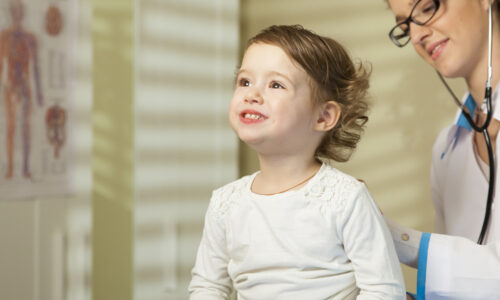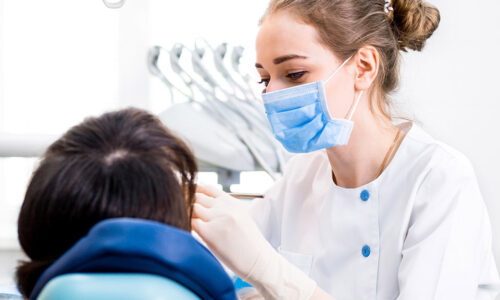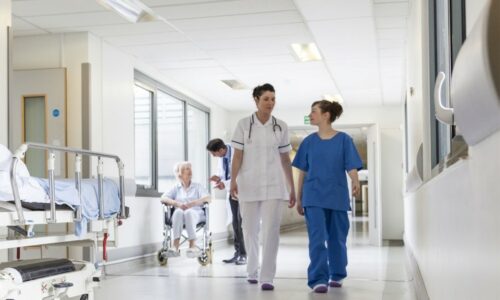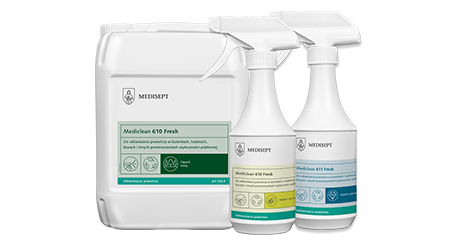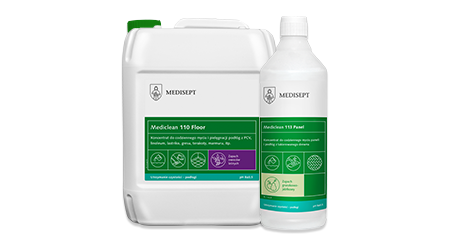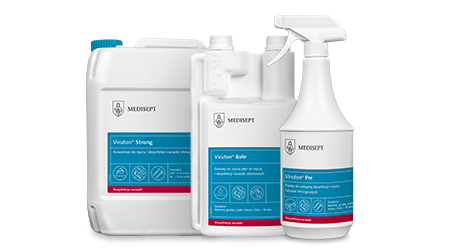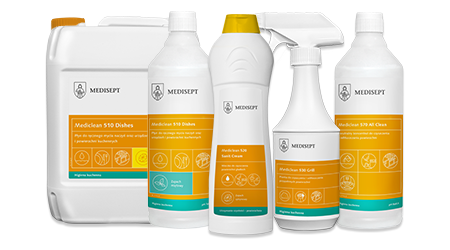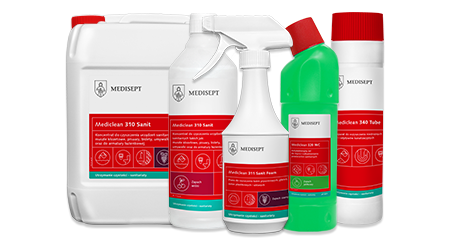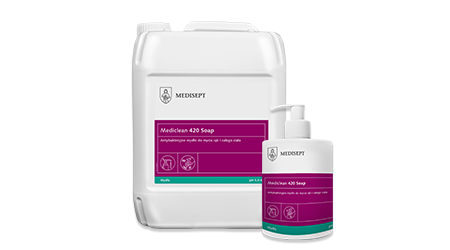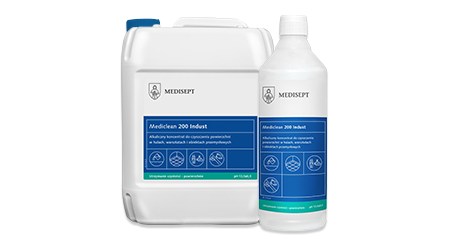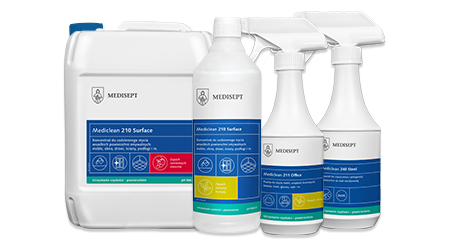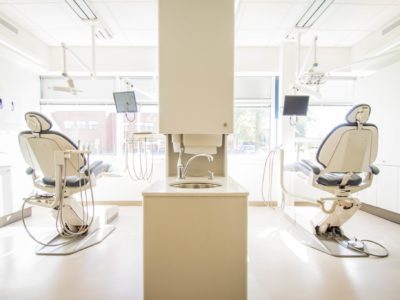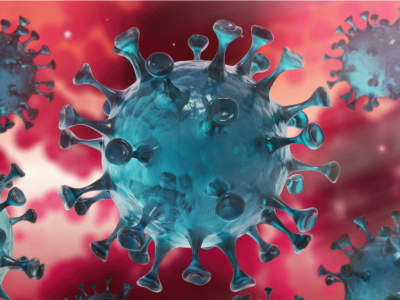What disinfection is for?
Proper disinfection and the handling of designated hygienic procedures is an extremely important element of infection prevention in healthcare facilities. This requires the staff and cleaning personnel to acquire a certain amount of knowledge and skills. Awareness of the possible routes of transmission of infections is the first step to the proper conduct in order to avoid infections.
In the doctor’s office, the source of infection may be the patient, medical staff or other people who have contact with the former’s surroundings. They may have an active infection without clinical signs or be in the incubation period of an infectious disease. The fact that some people do not develop any symptoms and some people get sick is still not entirely clear. This is known to be influenced by the condition of the immune system. Older people with chronic diseases (diabetes), immune disorders (HIV), after transplantation or during treatment may be more sensitive to infections.
The pathway for spreading infections is not only the direct contact (the hands of the staff). We can talk here about another three possibilities: infection through indirect contact – infected equipment (face masks, mammals, resuscitation devices, humidifiers for incubators, nebulisers, ventilators, baths, conjunctival flushing solutions, liquid soap containers); drip tray and through contaminated carriers (blood, liquids, food).
Various microorganisms may be the agents of infection. Let us list them:
- Bacteria (B), including mycobacteria (Tbc);
- Fungi (F);
- Viruses (V) and spores (S).
Another important factor for the safety of patients and staff is the proper selection and subsequent handling of disinfectants in areas such as disinfection:
- Instruments;
- Surfaces;
The detailed requirements for the individual product groups and the respective handling techniques will be discussed later in the publication. It is very important that the selected preparations meet certain requirements, so that they can be used safely in the office, clinic or hospital. Currently, from a legal point of view, they should meet one of the following criteria:
- have a declaration of conformity with the essential requirements of the directive 93/42 EEC, which in practice means qualifying these preparations to the group of medical devices (class II a or II b) and marking by placing the CE mark on the packaging together with a numerical code marking the notifying unit. If such a declaration is issued by an EU manufacturer, there is no need to make an entry in the Register of Medical Products in Poland.
- or have a marketing authorisation for a biocidal preparation issued by the Office for Registration of Medicinal Products, Medical Devices and Biocidal Products in Warsaw.
- or, in the case of preparations for skin and mucous membranes, should be listed in the Register of Medicinal Products. In addition, a safety data sheet is required for each of these groups. Please note that it is the responsibility of the operator who places the product on the market to provide these documents. Meeting these requirements allows for the use of a product which, in accordance with Polish regulations, is allowed on the market. With Poland’s accession to the EU, the lists of products positively reviewed by the PZH lose their formal strength. In practice, this means that the inspection bodies cannot accuse users of using products in contravention of the regulations if these preparations have only the EU approval and do not have the opinion of the PZH.
Surface disinfection in healthcare facilities
We divide surface disinfectants according to the size of the area to be disinfected into: Preparations for small and hard to reach areas (patient’s bed, cupboard, handle) and large, so called “washable” areas (floors, lamps). At this stage we choose preparations from completely different product groups. For small, difficult-to-access surfaces, alcohol-based preparations are used, which, due to their properties, are perfect for this type of treatment. They are characterized by fast action time, drying without leaving streaks and relatively wide fighting spectrum. Aerosol or tissue preparations are most often used for this type of surface. Assuming that during treatment and dental procedures, organic secretions splash occurs, it can be assumed that the patient’s environment is loaded with protein substances. Hence the need to select preparations that have the widest possible spectrum of action, or at least include blood-borne viruses (HIV, HBV). Action against Tbc is also recommended. Recently, effectiveness against the A/H1N1 virus is very important. All MEDISEPT products have this virucidal effect.
A declaration by the manufacturer or the submission of tests to confirm that the preparation has been tested under simulated conditions of use (Phase 2, step 2) may be important information for the user. Information about the possibility of using the preparation also in the presence of biological contamination is important. Biological contamination is defined as visible contamination caused by the patient’s body fluids (blood, saliva, secretions and excretions).
Despite the widespread use of alcohol-based products, there is a risk of material intolerance, e. g. with the upholstery of the chair or other materials used. It should also be noted that most lamps are made of acrylic glass, which becomes dull after a long period of use. Preparations based on ingredients other than alcohol are then used.
In the case of preparations used for large area disinfection, the range of chemicals and their groups is much more extensive. Chlorine preparations are used here because of their wide spectrum of action and possibility of use in the presence of biological contamination. They are cheap and effective. However, the reduction is due to the odour nuisance when used in the presence of patients and high toxicity. Currently, the broadest group of products are amines and their derivatives (QAC). Their relatively low cost, good cleaning properties, wide spectrum and low nuisance make them very popular. It is important to use appropriate preparations for both small and large areas, and to read the spectrum of action for no longer than 15 minutes. Of course, a shorter action time is welcome, especially in the case of aerosol formulations.
For protection of small or hard-to-clean surfaces, barrier protection is most effective. The barrier must be liquid-resistant. Materials such as plastic tape, napkin, disposable sheet, cover are most often used as such protection. Disposable articles must be changed after each contact with the patient. Disinfection is not necessary if the barrier is not damaged. In case of damage or when the protected surface has become contaminated during the removal of the barrier, washing and disinfection of the surface is necessary. At the end of the day, regardless of the barrier used, the surface should be washed and disinfected. The use of barriers is not yet popular in Poland, but due to their functionality it is constantly growing.

